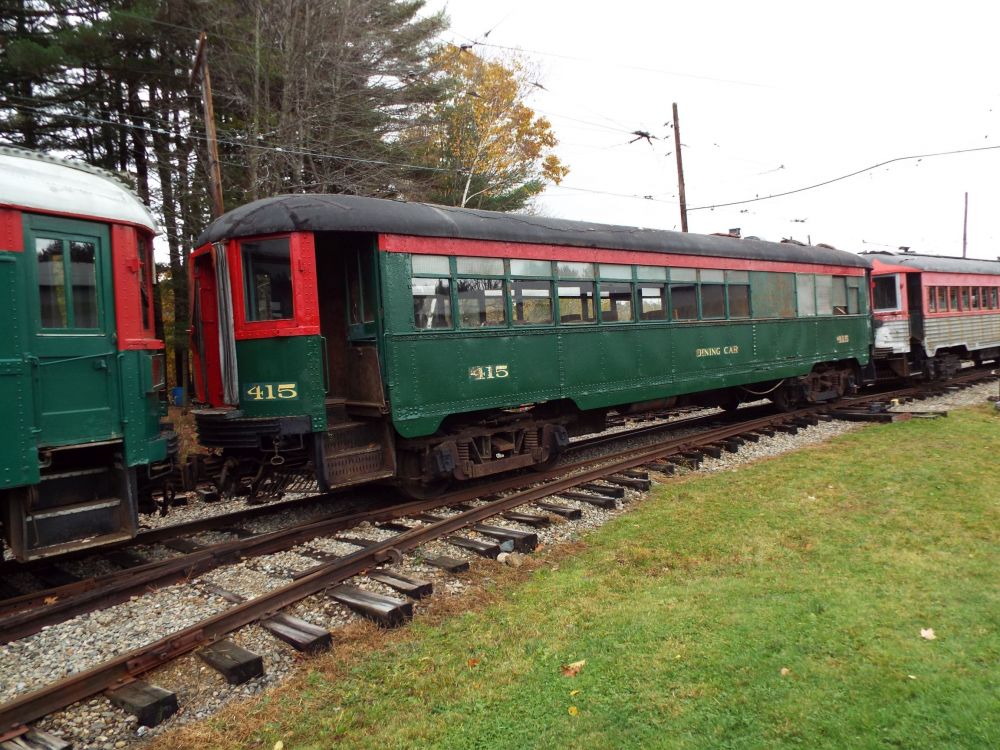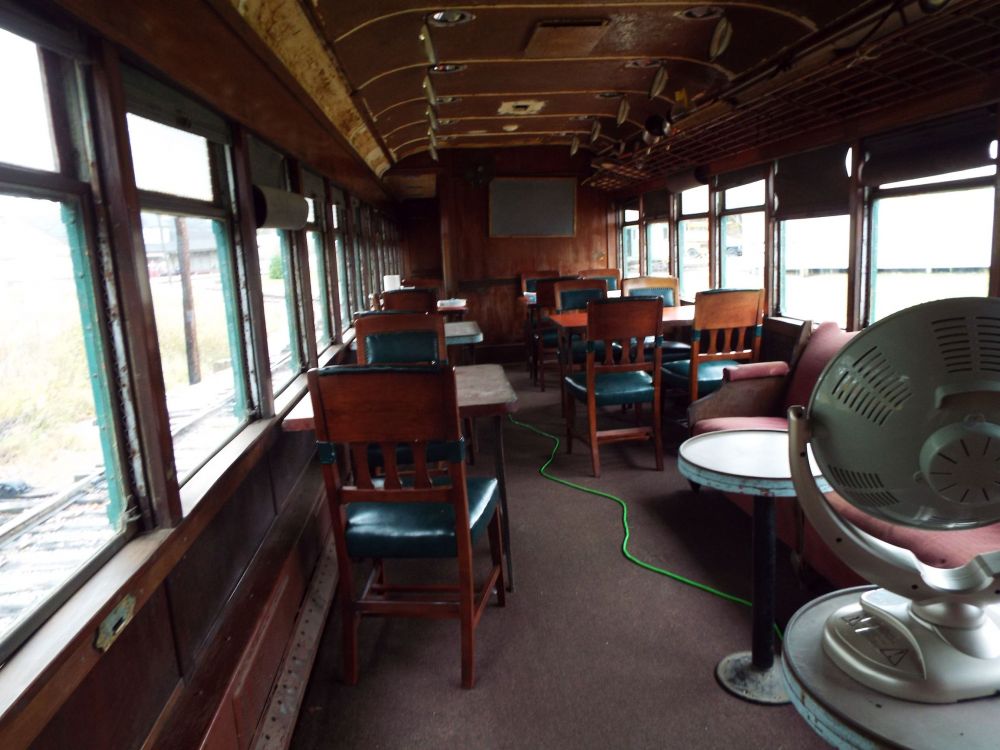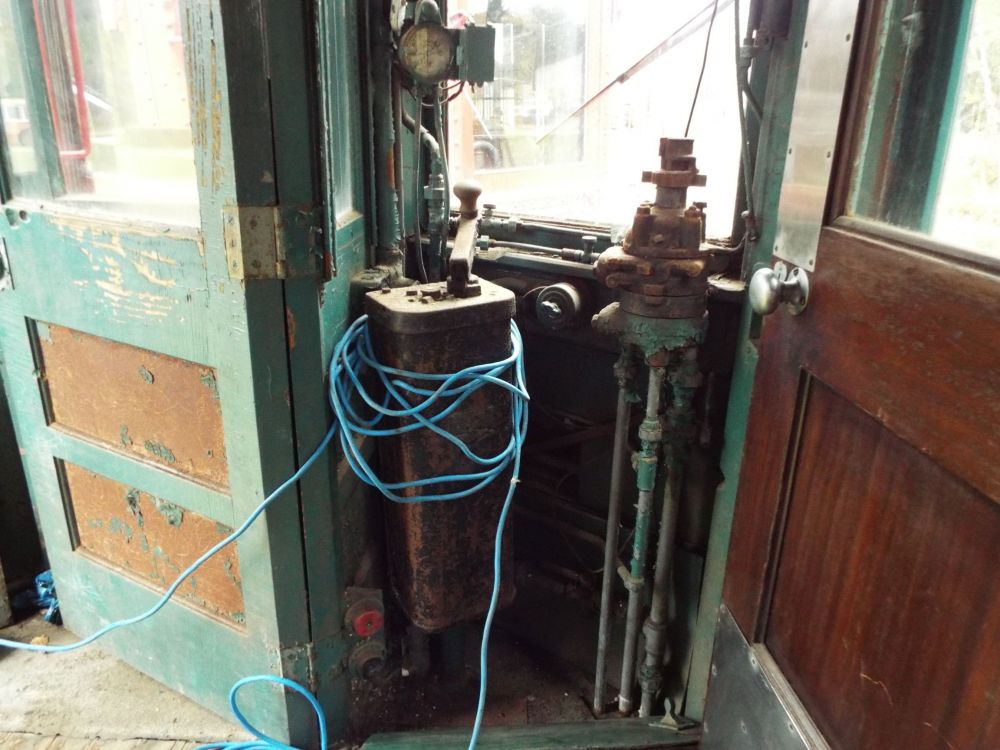
Norman Down
- Builder
- Cincinnati Car Co.
- Description
- Steel interurban dining car
- Secondary Use
- None
- Type
- Interurban Cars
- Year
- 1926
- Retired from Service
- 1963
- Acquired by the Museum
- 1977
- Fund
- 788
North Shore Line 415
From Chicago, Illinois
History
The Chicago North Shore & Milwaukee (commonly called the “North Shore Line”) operated between Chicago, IL and Milwaukee, WI. Between Chicago’s downtown Loop and the city’s northern boundary, North Shore trains ran over the Chicago Rapid Transit’s elevated line. Utilities magnate, Samuel Insull, acquired control of the North Shore in 1916 and made substantial improvements to the interurban’s track and rolling stock. Insull’s key improvement was construction of the high speed “Skokie Valley” line in 1926 which by-passed the slow route through suburbs close to Lake Michigan. In 1926, for service on this new route, the North Shore acquired 20 coaches and four unpowered dining cars (Numbers 414-417) from Cincinnati Car Co.
Dining cars on interurban lines were rare because runs tended to be short. The Chicago, North Shore and Milwaukee’s two-hour run between its namesake cities was just long enough for a good meal, and the company offered dining service on its express trains. In 1940, the North Shore remodeled Nos. 415 and 417 into tavern-lounge cars. The remodeling included decorations in a boy-and-girl motif, a J shaped lounge seat and new stainless steel kitchen fittings. The modernized diner-lounge cars made three trips daily-except-Sunday, giving breakfast, lunch and supper service.
In 1941, the North Shore introduced its streamlined Electroliners, two four section articulated trains which included snack bar cars. In 1949, the North Shore withdrew meal service on trains other than the Electroliners. In 1950, in order to provide snack bar service when the Electroliners were laid up for inspection or repairs, the North Shore line rehabilitated 415 and used it in a “substitute Electroliner” train along with two powered coaches. The remodeling included repainting the car’s exterior from its original dark green into the North Shore’s Silverliner paint scheme. The Silverliner scheme was dark red on the top half of the car, with stripes of light and dark aluminum paint on the bottom half airbrushed to simulate fluted stainless steel. No. 415 continued in substitute Electroliner service until the North Shore Line was abandoned in January 1963.
Following the abandonment, many North Shore Cars were acquired by museums. No. 415 went to the Railway Equipment Acquisition and Leasing Co., aka. RELiC, which operated the Fox River Trolley Museum at South Elgin, IL. In 1977, Seashore acquired No. 415 from RELiC. For several years beginning in 1979, Seashore used No. 415 both for stationary food service and as an operating snack car for special events. As revenue did not exceed costs, this service was discontinued after a number of seasons, and the car was stored in a carhouse. The museum repainted the exterior to its original green color and removed the tavern lounge chairs. Lighting struck No. 415 which destroyed the car’s wiring. Seashore is currently restoring No. 415 to its "substitute Electroliner" condition with its tavern lounge interior. The museum plans to apply the Silverliner paint scheme to the exterior. No. 415 still stands as the only extant interurban dining car.
Technical Information
- Seats: 18
- Control: None (28A3)
- Brakes: AMU
- Compressor: None
Trucks
- Number: 2
- Manufacturer: Baldwin
- Model: 84-30AA
Weight and Dimensions
- Length: 55’ 3.00"
- Width: 8’ 8.00"
- Height: 12’ 8.00"
- Weight: 62000 lbs.
Additional Images

Kenyon F. Karl on 10/30/16

Kenyon F. Karl on 10/30/16

Kenyon F. Karl on 10/30/16

Kenyon F. Karl on 10/30/16

Kenyon F. Karl on 10/30/16

Dave Mewhinney at newdavesrailpix.com
© 1998 - 2025 New England Electric Railway Historical Society. All Rights Reserved.